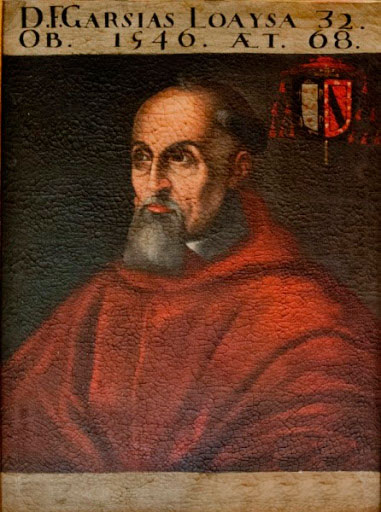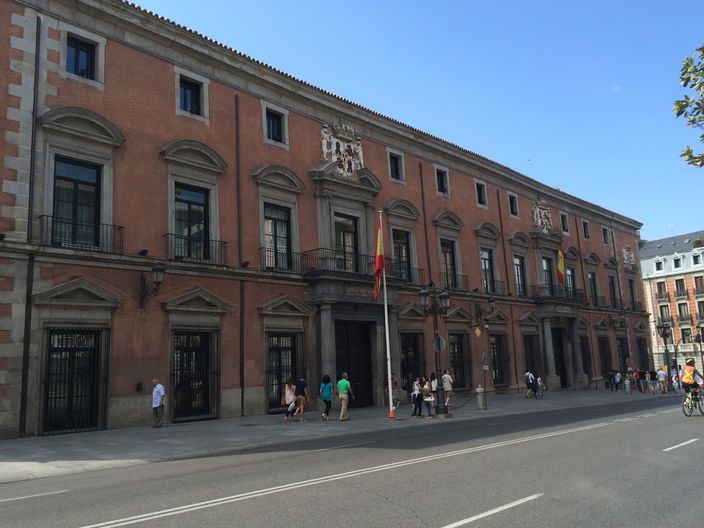The Royal and Supreme Council of Indies was the most important regulatory organization for political, administrative and legal activities in the Indies. Among its functions were executive, legislative and judicial, as well as advising the King on decisions affecting the Spanish overseas territories.
From the beginning of the conquest and colonization of the New World, Indian affairs were dealt with by the Council of Castile until the increase in activity led to the creation of a special section within this Council in 1519. And in 1524 it was separated from it by order of the rey Carlos I founding the Royal and Supreme Council of Indies. This organization did not have a fixed place at the beginning. It used to be found where las Cortes were at that time and it was not until 1561 that it settled in Madrid.

Its members were appointed by the King and were enlightened and competent persons in the matters in which they participated, mostly former officials who had already served in the Indies and who knew them very well. Its first president was the clergyman Juan García Loaysa y Mendoza. The Council selected and presented to the King the possible candidates for viceroys, governors, oidores, judges, etc., who would be sent to the Indies.
The Council worked during the week and prepared a document called “Consulta” which was shown by the President of the Council to the King. The monarch reviewed it and, in the margin of the document, wrote his final decision, which was promulgated by Royal Decree and ordered to be executed by the Council itself. The Council also received Royal Orders, which were provisions sent by the King himself and which had to be promulgated immediately. Both documents were sent to the viceroy and Reales Audiencias for observance.

But the functions and structure of the Indian Council were not uniform throughout its existence, but there were several changes to streamline and improve its functioning. In the year 1600 the Junta de Guerra de Indias was created that would deal only with military and defence issues. And also the Cámara de Indias in which the distribution of grants and the appointment in secular and ecclesiastical offices was managed by the Real Patronato through which almost all aspects of the Indian church were directed, both in the collection of tithes and in the division of the dioceses. In exchange for this influence, the crown was obliged to finance the expenses of the clergy in their evangelizing mission.
The positions that made up the Council of the Indies were: the president, a prosecutor who looked after the interests of the crown, a Secretary of Peru and another from New Spain, a notary, a great chancellor who guarded the Royal Seal, rapporteurs and accountants, the chief cosmographer of Indies, the chief chronicler of Indies and the lawyer for the poor.
Functions of the Indian Council:
Although they varied in time, the Council of the Indies carried out many tasks that were entrusted to it depending on the circumstances of the time and of which we can highlight the following:
Government:
- Develop and propose to the King policies concerning Indies (demographic, indigenous, trade, etc.).
- Territorial administrative organisation.
- Proposing people for viceroyalty and all kinds of positions.
- To manage the functioning of administrations and appoint a Judge of Residence.
- Review correspondence sent from America.
- Book censorship.
- Regulate the flow of passengers to Indias.
- Monitoring law enforcement.
- To examine and, if necessary, authorize the legislative proposals received from the Indies.
- Prepare the Royal Cedulas on the Indies.
- Examining all religious aspects.
- To examine and decide on military and defence issues in the Indian War Board, created in 1600.
- Examine the accounts of the royal officers.
Judicial:
The Council of the Indies were the highest court in America and is independent even from the King. Although the aim was not to overload the Council too much in judicial matters, they had to be extraordinary or very high value cases. The Council was considered more important to focus on governance issues.
Its main judicial functions were:
- Certain criminal matters committed in the career of the Indies, tax evasion or smuggling.
- Civil appeals in excess of 40,000 maravedíes.
- Appeals from the Residence Trial.
- Recourse of second supplication.
Loss of influence
With the arrival of the Bourbons to the Spanish crown in the eighteenth century, the Secretaries of State and the Office were created, who assumed a large part of the functions of the Council of the Indies and left it practically alone as a Supreme Court for the Indies. It was definitely dissolved in 1834 with the arrival of the liberal regime to the Spanish government.